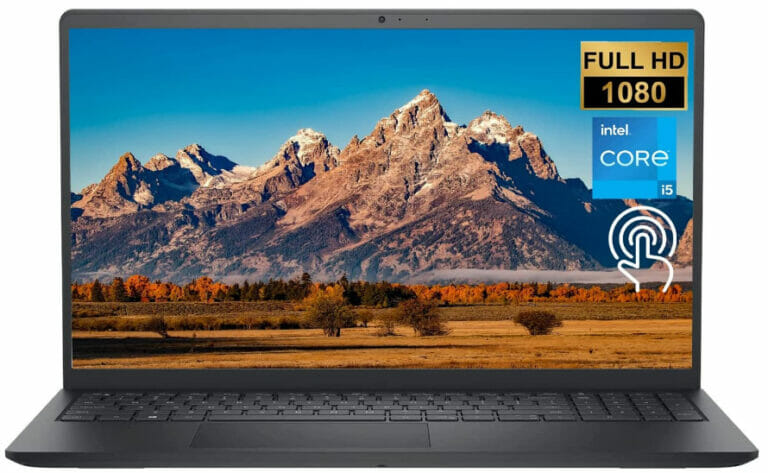If enhancing your performance is the priority, the Logitech G502 HERO delivers precision and customization, boasting a 16,000 DPI sensor that adapts seamlessly to various tasks. With 11 programmable buttons, this device allows you to execute complex commands effortlessly, making it ideal for multitasking and intensive sessions alike.
For those who seek mobility without sacrificing functionality, the Razer Viper Ultimate stands out with its lightweight design and advanced optical sensor. Weighing under 75 grams, this wireless option offers a lag-free experience, ensuring your inputs register instantaneously, whether at home or on the go.
The SteelSeries Rival 3 offers exceptional value, combining comfort with reliable performance parameters. With its TrueMove Core sensor and customizable RGB lighting, this device not only performs well in various environments but also provides a personalized touch to your setup.
In the realm of versatility, the Microsoft Surface Precision Mouse excels. Its ergonomic design supports multiple device connections simultaneously, making transitions between tasks fluid. The adjustable sensitivity settings cater to both detailed work and rapid movements, accommodating different user preferences.
Choosing the right input device can drastically influence your efficiency. Whether for immersive experiences or detailed projects, the options listed above cater to diverse needs, ensuring every click contributes to your success.
Choosing Between Wired and Wireless Mice for Gaming
For serious gamers, wired options offer lower latency and a stable connection. This can be critical in fast-paced scenarios where every millisecond counts. Many high-performance wired devices feature high polling rates, often exceeding 1000 Hz, ensuring rapid response times.
Wireless alternatives have improved significantly, with advancements in technology reducing lag. Many models now utilize RF or Bluetooth connections, providing a clean setup without tangled cords. Some top brands offer wireless devices with latency comparable to wired units. However, ensure that the selected model has a good battery life and swift charging capabilities.
Latency and Performance
When precision matters, wired units tend to excel. They bypass potential interference from wireless signals. However, high-quality wireless devices, particularly those equipped with proprietary technologies, can rival their wired counterparts in response times. Assess whether your gameplay requires razor-sharp precision or if a slight delay is manageable.
Comfort and Usability
Consider ergonomics and weight distribution. Some prefer the unrestricted movement of wireless devices, while others favor the stability of wired versions. Test both types where possible to find the best fit for prolonged use without fatigue. Additionally, features like customizable buttons and DPI settings can enhance the experience, regardless of connection type.
Understanding DPI Settings and Their Impact on Precision
DPI (dots per inch) determines how far the cursor moves on the screen based on the physical movement of the pointing device. A higher DPI reflects increased sensitivity, enabling quick movements across expansive displays, while a lower DPI offers precise control, ideal for tasks requiring accuracy.
Choosing the Right DPI
- For fast-paced activities, such as first-person shooters, 1800 to 3200 DPI is typically recommended for swift target acquisition.
- For tasks that demand precision, like graphic design or photo editing, settings between 400 to 800 DPI are preferred.
- Adjustable DPI options allow users to switch sensitivity based on activities; many devices offer buttons for on-the-fly adjustments.
Impact on Performance
- Higher DPI provides rapid movements, beneficial for large screens or multiple monitor setups.
- Lower DPI enhances targeting accuracy; small movements translate to minimal cursor motion.
- Proficient users often balance DPI settings with mouse polling rate to achieve a responsive experience.
Understanding DPI settings is essential for optimizing both speed and accuracy in various tasks, ensuring users can tailor their device to best suit their needs.
Key Features to Look for in Productivity Mice
Choose a model with adjustable DPI settings, allowing users to customize sensitivity based on tasks. A range from 800 to 3200 DPI is typical, providing flexibility for precise control when working on detailed projects or quick navigation during multitasking.
Ergonomic Design
An ergonomic shape is critical to reduce strain during extended usage. Look for options with contoured grips and finger placements that support a natural hand position. Features like thumb rests and customizable buttons enhance comfort and streamline repetitive tasks.
Battery Life and Connectivity
Opt for devices with long battery life, preferably over 30 hours of continuous use. Wireless connectivity should be reliable; models with Bluetooth or USB dongles provide flexibility without compromising performance. Quick charging capabilities are advantageous for continuous operation.
Comparing Ergonomic Designs for Comfort During Long Sessions
Choosing an ergonomic design significantly impacts comfort during extended use. Look for options with a contour that supports the natural position of the hand and wrist. A prominent feature is an adjustable palm rest, ensuring proper alignment and minimizing strain.
Shape and Size
Select devices shaped to fit the user’s grip style, whether palm, claw, or fingertip. Larger devices may suit individuals with bigger hands, while compact options cater to smaller hand sizes. Test various models to identify the most comfortable fit, as the right dimensions can alleviate pressure points.
Button Placement and Functionality
Ergonomics extends to button layout. Devices with programmable buttons near the thumb enhance accessibility without awkward finger movements. Assess adjustable DPI settings, allowing users to change sensitivity easily for different tasks, contributing to a more personalized experience.
Best Gaming Mice for Competitive Play: A Deep Dive
The Razer DeathAdder V3 Pro stands out with its ergonomic design and high-performance features. It boasts a lightweight form that enhances agility during intense skirmishes. With an impressive 30,000 DPI optical sensor, this device ensures pinpoint accuracy and rapid response times.
The Logitech G Pro X Superlight is another remarkable choice, engineered for those who prioritize speed and precision. Weighing in at just 63 grams, it allows seamless movements. Its HERO 25K sensor provides incredible tracking capabilities and customizable sensitivity settings, making it perfect for various genres.
For a budget-friendly yet high-quality alternative, the SteelSeries Rival 3 delivers excellent performance without breaking the bank. With a TrueMove Core optical sensor, it supports up to 8,500 DPI. This model focuses on essential functionalities, offering a solid experience for competitive scenarios.
| Mouse Model | Weight (g) | Max DPI | Key Feature |
|---|---|---|---|
| Razer DeathAdder V3 Pro | 63 | 30,000 | Ergonomic Design |
| Logitech G Pro X Superlight | 63 | 25,600 | Ultra-Lightweight |
| SteelSeries Rival 3 | 77 | 8,500 | Budget-Friendly |
For those seeking a blend of style and performance, the Corsair Dark Core RGB SE has customizable RGB lighting, comfortable grip, and a versatile wireless option, featuring a 16,000 DPI optical sensor. The flexibility of connectivity types gives it an edge during long gaming sessions.
An impressive option for esports enthusiasts is the Zowie FK2, praised for its simple, no-nonsense design. Offering two unique sizes and a 3200 DPI sensor, this model caters to various grip styles and preferences, making it a staple among competitive players.
Each of these devices caters to specific needs, enhancing performance in competitive environments across a variety of gaming genres. Choose based on weight, sensor type, and design to maximize your capability in any arena.
Budget-Friendly Mice That Don’t Compromise on Performance
Logitech G502 HERO stands out as an exceptional choice with its high-precision HERO sensor, offering DPI settings up to 16,000. Versatile programmable buttons enhance your setup, while the comfortable design ensures prolonged use without fatigue.
Razer Basilisk Essential combines functionality and affordability. The adjustable DPI settings reach 6,400, making it suitable for diverse tasks. The customizable scrolling resistance allows personalized feedback, enhancing your interaction with applications.
HyperX Pulsefire Core
This model features a Pixart 3327 sensor with a DPI range of 200 to 6,700, hitting the mark for responsiveness across different activities. Its ergonomic design caters well to various grip styles, ideal for hours of intensive work or play.
SteelSeries Rival 3
With a TrueMove Core sensor capable of up to 8,500 DPI, this option delivers reliable accuracy. The durable construction ensures longevity, making it a smart investment. Additionally, customizable lighting adds a personal touch without inflating the cost.
Each model highlighted here guarantees performance without straining your budget. They all contribute significantly to enhancing your experience, whether you’re focused on tasks or leisure activities.
Q&A: The best computer mice
Which Logitech MX Master 3s feature makes it the top pick for professionals who scroll through spreadsheets all day?
Its MagSpeed scroll wheel shifts from ratchet to free-spin automatically, letting you fly through 1,000 rows in a second, while the ergonomic contour supports larger hands during long hours of office work.
Why is the Logitech G502 X considered the best wired mouse for players who demand competitive gaming accuracy without battery concerns?
A 25K HERO sensor, adjustable weights, and low-friction mouse feet give pinpoint tracking; combined with a wired connection, lag shrinks to virtually zero for responsive gaming.
How does the best wireless gaming mouse category crown the G Pro Wireless even in 2025?
Ultralight 80-gram construction, a 2,000 Hz wireless polling rate, and optional wireless charging pad ensure this premium mouse offers high-end gaming performance without a cord.
Which budget gaming mouse delivers the best value for newcomers seeking solid DPI and RGB while keeping costs under $40?
A lightweight shell, 10K optical sensor, and dual-mode wireless connection earn it the title of best budget pick, proving a budget mouse can still elevate your gaming experience.
What makes a vertical mice design the healthiest choice for users who work long hours and suffer wrist strain?
By rotating the forearm, vertical mice reduce ulnar deviation compared with traditional mice, so every mouse movement feels natural and less fatiguing.
Why do digital nomads label a 55-gram mini pointer the best wireless travel mouse on this list?
It slips into a laptop sleeve, pairs as a low-power Bluetooth mouse, and glides smoothly on any mouse pad, perfect when you move the mouse on cramped airline trays.
How do trackball mouse options help creatives who lack desk space but still want pixel-precise control?
The thumb-ball stays stationary, so you use your mouse without shifting hardware, and inside the mouse a high-resolution optical reader ensures fine adjustments for photo edits.
Which ergonomic mice earn the “versatile mouse” label because they switch between three computers with a press of a button?
They support Logi Flow in Logitech Options, allowing clipboard copy-paste across macOS and Windows, ideal for users juggling work and play.
What upgrades separate best wireless mice of 2025 from earlier models in terms of gaming performance?
Modern sensors hit 30K DPI, mice offer 4KHz polling, and wireless gaming mice now equal wired gaming mouse latency, so a cable is no longer mandatory.
Why should budget buyers still keep a mouse pad handy even with advanced PTFE feet?
Smooth fabric reduces drag, preserves mouse feet, and prevents dust ingestion, ensuring any mouse may last years whether it’s a premium mouse or a budget gaming mouse.

